Mission: Impact podcast & blog
Build a better world without becoming a martyr to your nonprofit cause
Listen on:
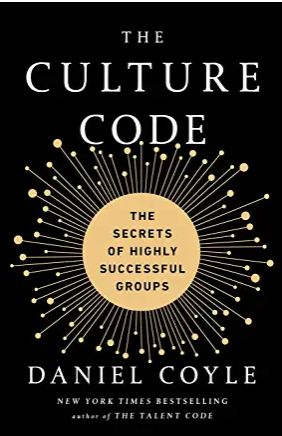 The Culture Code: The Secrets of Highly Successful Groups By Daniel Coyle What creates successful group and organizational cultures? That is the question that Daniel Coyle pursues in his book. “Culture is a set of living relationships working toward a shared goal. It’s not something you are. It’s something you do.” US culture tends to focus on the charismatic, visionary leader yet Coyle’s research finds that successful groups tend to do lots of small things towards success rather than large dramatic things. Three key skills emerge – build safety, share vulnerability and establish purpose. Like Jim Collin’s Good to Great, Coyle finds a lot of quiet, observational leaders who cultivate a healthy ecosystem and group around them through lots of questions at key points to help team members learn to think on their own. There are lots of useful and actionable points in the book. I wish for a future when business books highlight as many women as men in their examples without having women in the title! 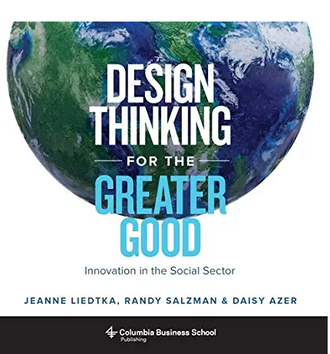 Design Thinking for the Greater Good: Innovation in the Social Sector By Jeanne Liedtka, Randy Salzman & Daisy Azer Design thinking is a problem solving approach that is human centered. It prioritizes really getting to know the people involved in your challenge and looking at the world from their perspective. It focuses on multiple options, experimentation and iteration. This method has served to democratize design and Jeanne Liedtke’s model makes it particularly accessible (What is? What if? What wows? And What works?). While the process originated in Silicon Valley, Liedtke and her team profile how design thinking has been used in the social sector. They include case studies from government, national, state and local nonprofit organizations – from the US and internationally. Each instance showcases the real experience – from the excitement at the start of the project to the dead-ends and false starts to results that in many instances could not have been envisioned from the outset. Using design thinking, the professionals highlighted get to see their organization from the perspective of whom they serve. With this, they are able to identify the ways in which the system is not made for the client. Then they are able to imagine how they might make things better. This is all in the service of having clients have a better and more humane experience while getting the help the organization is designed to deliver. If you have just heard about design thinking and have wondered how it might apply in your situation, this book is a great place to start. 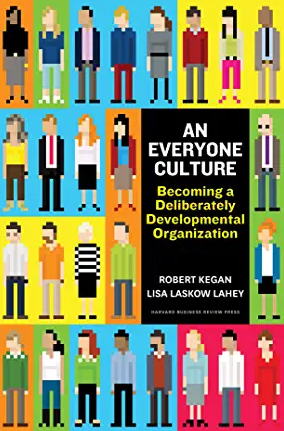 An Everyone Culture: Becoming a Deliberately Developmental Organization By Robert Kegan and Lisa Laskow Lahey “In most organizations, everyone is doing a second job no one is paying them for…Most people are spending time and energy covering up their weaknesses, managing other people’s impressions of them, showing themselves to their best advantage, playing politics, hiding their inadequacies, hiding their uncertainties, hiding their limitations. Hiding.” (pg1, An Everyone Culture) What if this were not necessary? An Everyone Culture describes a few unicorn organizations that have truly put people at the center of their purpose. Developing and investing in people. Not as an afterthought or bonus for just for a few people – for everyone. Where the culture revolves around helping everyone recognize, acknowledge and learn from their mistakes, build on their strengths and stretch and grow. Lots of organizations give lip service to the idea that people are their most important asset. Yet they rarely act as if that were really true. Each of the three organizations the authors describe as deliberately developmental organizations (DDO) do this through a multitude of practices that center transparency, regular feedback across all levels, team building and professional development – at the individual, team and organizational level. While the authors went into their research assuming that being a DDO would contribute to the business success of these organizations, they concluded by the end that in fact being a DDO is the cause of the business’ success. Much has been written about how emotional intelligence and people skills will be the key differentiators as work continues to morph and shift. Learn from these leaders what that might look like. 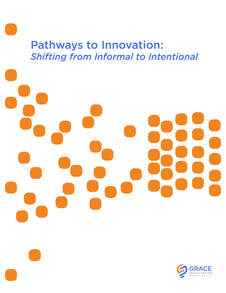 Most associations rely on informal processes for moving innovation forward within their organizations finds a new study, Pathways to Innovation: Shifting from Informal to Intentional. The majority of new ideas and initiatives come from staff with the CEO and senior leadership leading most efforts. Many of these ideas are adapted from other organizations. We are innovativeIt was surprising that most of the association executives who were interviewed described their association as innovative. This runs counter to the prevalent narrative that associations struggle with innovation and change, Yet few organizations are taking a member-centric approach to creating new programs and services that meet their members’ unmet needs. Additional FindingsInformal market research processes
The majority of associations interviewed also rely on informal market research processes. As other studies have found, they have few formal mechanisms for regular review of their portfolio of offerings and find it challenging to sun set programs and initiatives. Three primary foci of innovation projects Current innovation projects of the associations interviewed clustered in three primary areas: upgrading internal technology systems, building online learning programs and shifting to shorter, more targeted events. Download the full report, Pathways to Innovation: Shifting from Informal to Intentional. Nonprofit organizations are frequently under pressure to scale up their programs. Scalability and replicability are assumed to be a natural goal. When your program is having a positive impact on the people it is designed for, why would you not want to reach more people? Assumptions Yet there are some big assumptions built into this model. The first is that growth is always good. Our culture worships growth. The economy is only considered healthy when it is growing. A successful career is one moving up in responsibility and scope. A website wants to grow its readership. A podcast wants more listeners. Yet should this always be the goal? Are there alternatives to growing larger in scale? What about going deeper? Are nonprofits like machines?  Another is that nonprofits and their programs are like machines. The basic assumption for being able to scale and replicate is that the program is essentially similar to a widget. You should be able to document the basic elements of a program, train new people to deliver it, create it in a new location and the logic follows that you will then get the same outcomes in the new environment. Can you franchise a nonprofit program? Many nonprofits follow this model -- Habitat for Humanity, City Year, Teach for America. It borrows from the for-profit sector concept of a franchise. Yet can a nonprofit really be franchised? Can you standardize the program and deliver equivalent outcomes in the new arena? Can you really just hit copy and paste when you are dealing with people? Nonprofits as Human Systems  Yet nonprofit programs are not machines. They are inherently human systems. They are built with people with certain skills, talents and abilities to deliver a program. Delivering that program happens in a particular social context. The original participants bring a specific set of circumstances, attitudes and abilities. These all interact to create a unique mix. They have more in common with the uniqueness of snowflakes than widgets or hamburgers. Another analogy that comes to mind is a play - each performance is unique even though the script and the players are the same. Similar, sure, but unique. Usually the goal of these types of program is some type of transformation. To transform people's lives in some way -- Such as building young leaders or increasing educational attainment or creating self-sufficient home owners of low income families. Transformation has little to do with creating new exact copies of the original (widgets, hamburger, t-shirts). What has your experience with scaling? What has worked and what hasn’t? To discuss the strategic issues your organization is facing, inquire about a free coaching call.  photo by Mindy Johnson photo by Mindy Johnson This question helps you uncover the assumptions embedded in an idea. Often assumptions for programs and services are hidden in three key areas: audience, problem and solution. For the idea to be a good one, you need to have found the right audience, correctly identified an important problem and designed a solution that is viable. Let me give you an example. Using a design thinking approach to design new offerings for key segments of our organization’s audience, a team I led at my last association was able to design experiments that gave us feedback in each of these three key areas. Audience In one instance, we had designed a program for one audience segment. After we tested the idea with the target audience and received positive feedback, we proceeded to run a pilot. After successfully offering the program to one segment the association’s audience, we were able to replicate it for another audience. Problem Often this area is the most likely to trip you up. Have you identified a problem that is worth solving? Or a problem that is really critical for your target audience? Or is it just something that would be nice to solve? When hard choices are made about time, money and energy, this challenge gets put on the back burner. To test our understanding of the problem, we wrote a problem statement or description of what we thought the problem was. For example: “association professionals often have a clear understanding of the views of their highly engaged volunteers, but are not sure that these reflect their average member.” Through our experiments, we were able to get feedback on how important each issue was. With feedback we were able to eliminate a number of ideas that addressed problems that were not seen as critical. Solution When is the last time you got caught up in your idea and created something more elaborate than was really needed? In one case of one program we were testing with members, during the brainstorming stage, the design team had envisioned an executive leadership development program with an extensive online wrap around component. After testing and customer feedback, we learned that members were interested in the in-person aspect of the program. They doubted, however, that they would use the online components. Thus with a short testing period, we were able to eliminate a costly aspect of the program that would have be time consuming and resource intensive to create. It would have also necessitated increasing the program price, yet our research showed it did not provide sufficient value.
By testing early, getting feedback from customers we were able to learn and iterate, saving money and staff time by eliminating options that sounded promising at the white board but proved to have faulty assumptions. Want to talk about how this might apply to your organization? Request a free coaching session.  An influential volunteer has an idea within your nonprofit organization. They just came back from a conference and heard about an initiative another organization is doing. They think it would be perfect for your organization. When they describe the idea it sounds really intriguing. There is revenue potential and it promises to more fully engage your constituents. Your board and/or senior staff have a conversation about the idea and decide a staff person should put together a business plan. The staff person works on it and the projections look really promising. A staff team is pulled together and their other projects are put on the back burner. As the initiative gets closer to launch, a communications and marketing plan is put together. The initiative launches with lots of internal fan fare. And then…. What went wrong? Crickets. Very few people enroll. Internal discussion concludes that it must be the messaging. Marketing messages are tweaked and a new set of email blasts are designed and scheduled. But interest and enrollment remain low. What went wrong? Lean Start Up The lean start up approach is designed to address this common problem. People falling in love with their own ideas, settling on a wonderful sounding solution without really understanding the problem they are solving for the members or constituents they are trying to serve. Eric Ries created the method with the intent to shift entrepreneurs energy from developing elaborate business plans to ‘getting out of the building” and testing their assumptions with customers. Because it focuses on managing risk and conserving resources it is a good fit for resource poor nonprofits. Build, Measure, Learn 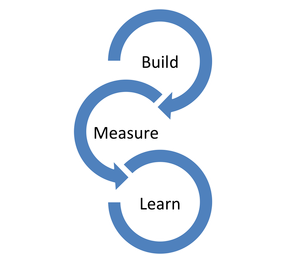 Lean start up helps you answer the question – how do we know what is actually worth working on? Based on three major steps – build, measure, learn, you create a minimally viable product instead of a business plan; identify assumptions by asking the question – what needs to be true for this to be a good idea and then design brief experiments to test these assumptions. Once the experiments are complete and you assess your results and learn from it. Does the evidence point to continuing with your idea as is? Or do you need to pivot? Or do you perhaps need to drop the idea and not expend any further resources on it? Experiments In the example above, instead of proceeding with a business plan and then immediately into launching a project team to build out the idea, the team would instead identify the assumptions inherent in the idea and then design experiments to test these assumptions with customers. Unearthing Your Assumptions Where traditional program design approaches have emphasized careful and lengthy planning, lean start up emphasizes experiments. In the past, new ideas were often based on intuition and anecdotes. Unfortunately these hunches were rarely tested with the audience they were designed for. Instead lean start up moves from an idea to gathering feedback almost immediately. Like the example at the beginning, many organizations have emphasized the ‘big launch’ after a closed or even secret design process. Lean start up focuses on the iterative process – getting feedback quickly and learning from it.
Think this might be a good approach for your organization and want to learn more? Get in touch with me for a complementary coaching session. |
Archives
April 2024

Grace Social Sector Consulting, LLC, owns the copyright in and to all content in and transcripts of the Mission: Impact podcast, as well as the Mission: Impact blog with all rights reserved, including right of publicity.
|
Telephone301-857-9335
|
info[at]gracesocialsector.com
|
Grace Social Sector Consulting, LLC, owns the copyright in and to all content in, including transcripts and audio of the Mission: Impact podcast and all content on this website, with all rights reserved, including right of publicity.
|